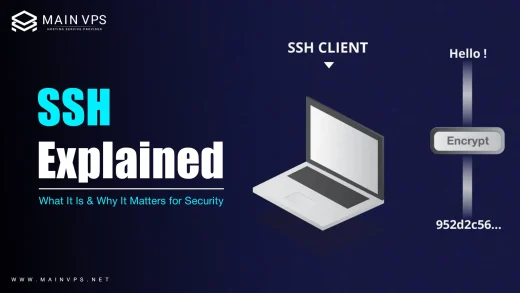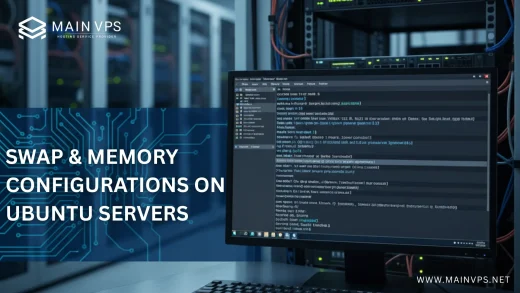
VPS (Virtual Private Server) hosting can dramatically reduce website latency by offering dedicated resources, customizable optimizations, and strategic server locations. Whether you’re serving users across regions or dealing with performance-sensitive apps, choosing the right VPS can shave milliseconds off each request—and improve every user’s experience.
What Is Latency—and Why It Matters
Latency is the gap of time between a user action and a system response. Slow performance, including high page loads, poor performance in real time apps, and angry users are symptoms of high latency especially if the users are located far from your server’s location.
- Customer satisfaction and conversions can drop due to a 100 ms increase in load time.
- For video conferencing, gaming, or trading in financial markets, experiences could be enhanced or ruined with a latency of 10 ms.
How VPS Hosting Can Reduce Website Latency
A. Strategic Server Placement
VPS providers can deploy servers in multiple regions across the globe. Hosting close to your audience reduces network distance, hence, reduces latency.
B. Dedicating Resources
With a VPS, the CPU, memory, and I/O are guaranteed unlike in shared hosting. This cuts down queuing, so if your neighbor runs a heavy task, your server performance will remain impeccable.
C. NVMe SSD Storage
Retrieving files faster improves TTFB (Time to First Byte) and responsiveness, thus, faster disk speeds aid in better Server disk responsiveness.
D. Control Panel & Custom Optimizations
With root access or control panels, you can tune your stack:
- Enable gzip compression
- Configure HTTP/2 or LiteSpeed
- Customize caching rules and timeouts—all for better latency.
E. Global CDN Integration
Most VPS packages support CDNs. They cache assets at edge points closer to your users—dramatically cutting down latency for static content and images.
Who Benefits the Most from Low-Latency VPS?
- E-Commerce Platforms: A 1-second delay can reduce sales by 7%—so latency spells revenue.
- SaaS & Real-Time Apps: Chat, dashboards, and API-driven services demand millisecond-level response times.
- Media & Streaming Sites: Lower latency means smooth playback and higher session durations.
- Developers & Agencies: Hosting trialsites in target regions lets clients experience faster-than-shared-hosting speeds.
Real-World VPS Latency Improvements
- User geolocation — Hosting in New Delhi for India, Frankfurt for Europe, or Tokyo for East Asia can cut ping from 180 ms to under 50 ms.
- Hardware upgrade—Switching from HDD to NVMe VPS can lower TTFB by 30–60 ms.
- Stack tuning—Tweaking server-side caching and compression on a VPS can halve load times for dynamic pages.
How to Measure & Optimize VPS Latency
- Use online tools like Pingdom or WebPageTest to measure real-world latency.
- SSH into your VPS and run
ping,mtr, ortracerouteto analyze network hops. - Benchmark server components:
- Test disk reads with
ddorfio - Monitor CPU/RAM during load with
htoporglances
- Test disk reads with
- Optimize iteratively:
- Enable gzip compression
- Configure caching headers (like
Cache-Control) - Select geographically proximate server
- Consider using a CDN for static content
Final Thoughts
A well-chosen VPS hosting plan—strategically located and properly configured—can reduce website latency significantly, improving load times and user satisfaction globally. From dedicated resources and NVMe speed to CDN integration and custom server tuning, a VPS offers tools to outpace shared hosting.
Need help choosing a low-latency VPS or optimizing it worldwide?
MainVPS specializes in VPS plans optimized to reduce website latency, with expert guidance and real-world performance tuning for global audiences.
FAQ
Q: Does VPS always cut latency?
Not automatically. You need good server location, NVMe storage, optimized stack, and optionally a CDN to get real gains.
Q: How much can latency improve with VPS?
You might cut under 200 ms ping to under 50 ms, and halve TTFB with NVMe upgrades.
Q: Should I use multiple VPS across regions?
For global reach, yes. Or use one VPS plus a powerful CDN for better global performance.
Q: Does managed VPS include tuning for latency?
Yes—MainVPS’s managed plans include server stack tuning, CDN integration, caching setup, and performance monitoring.
Q: What’s the difference between KVM VPS and OpenVZ?
- KVM VPS provides full virtualization, meaning you get dedicated resources and can run custom kernels or Windows VPS instances. It’s ideal if you need maximum control or plan to run software that requires specific OS-level features.
- OpenVZ VPS uses container-based virtualization. It shares the host’s kernel, making it faster for some workloads but less flexible. It’s often cheaper and works well for Linux-only environments where kernel-level tweaks aren’t required.
Ready to Reduce Latency?
Choose a MainVPS plan today and get:
- Optimized NVMe SSD VPS in strategic global regions
- Stack tuning for faster TTFB
- CDN setup for edge caching
- 24/7 expert support to keep latency low—everywhere.
👉 Explore Low-Latency Affordable VPS Plans Now





